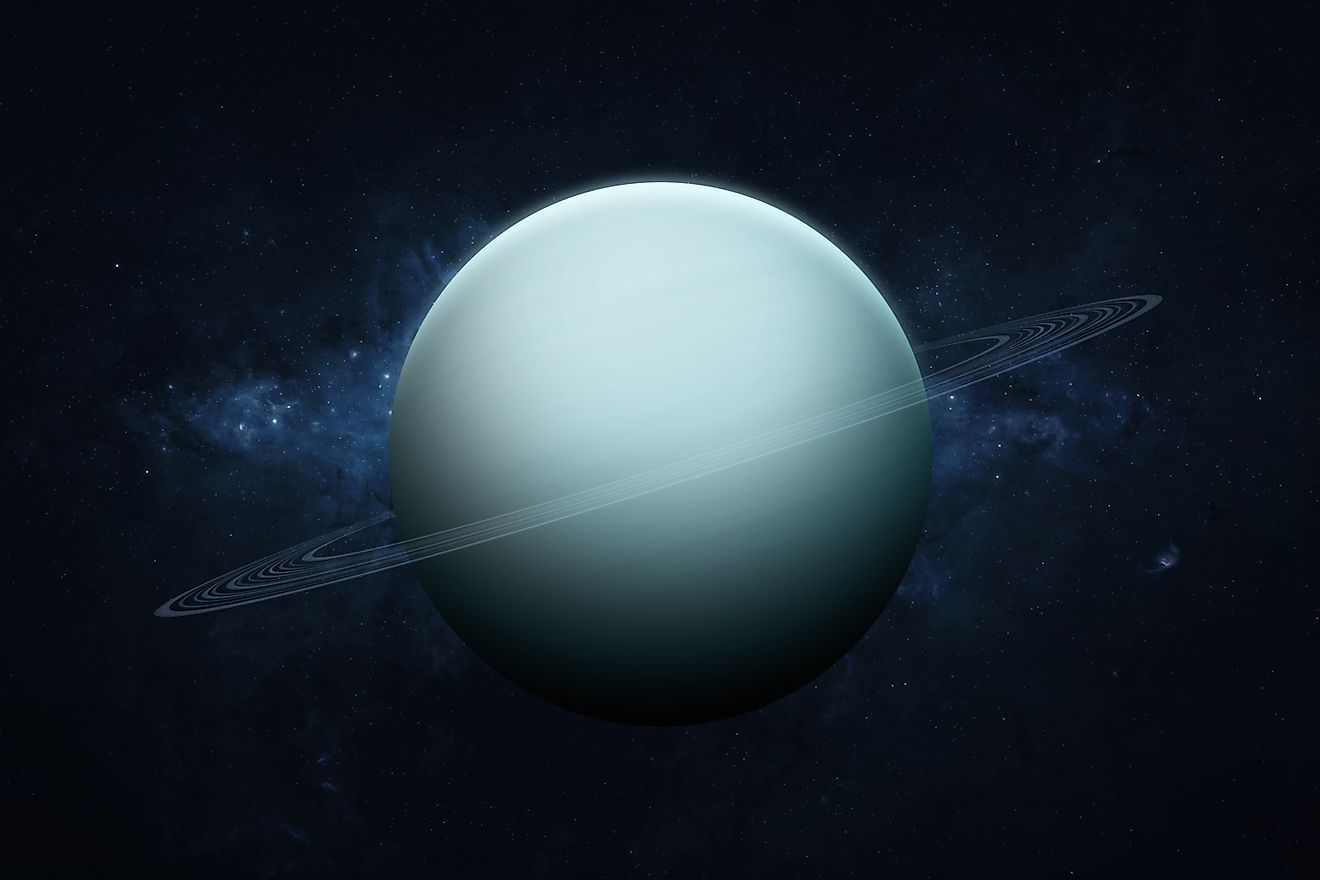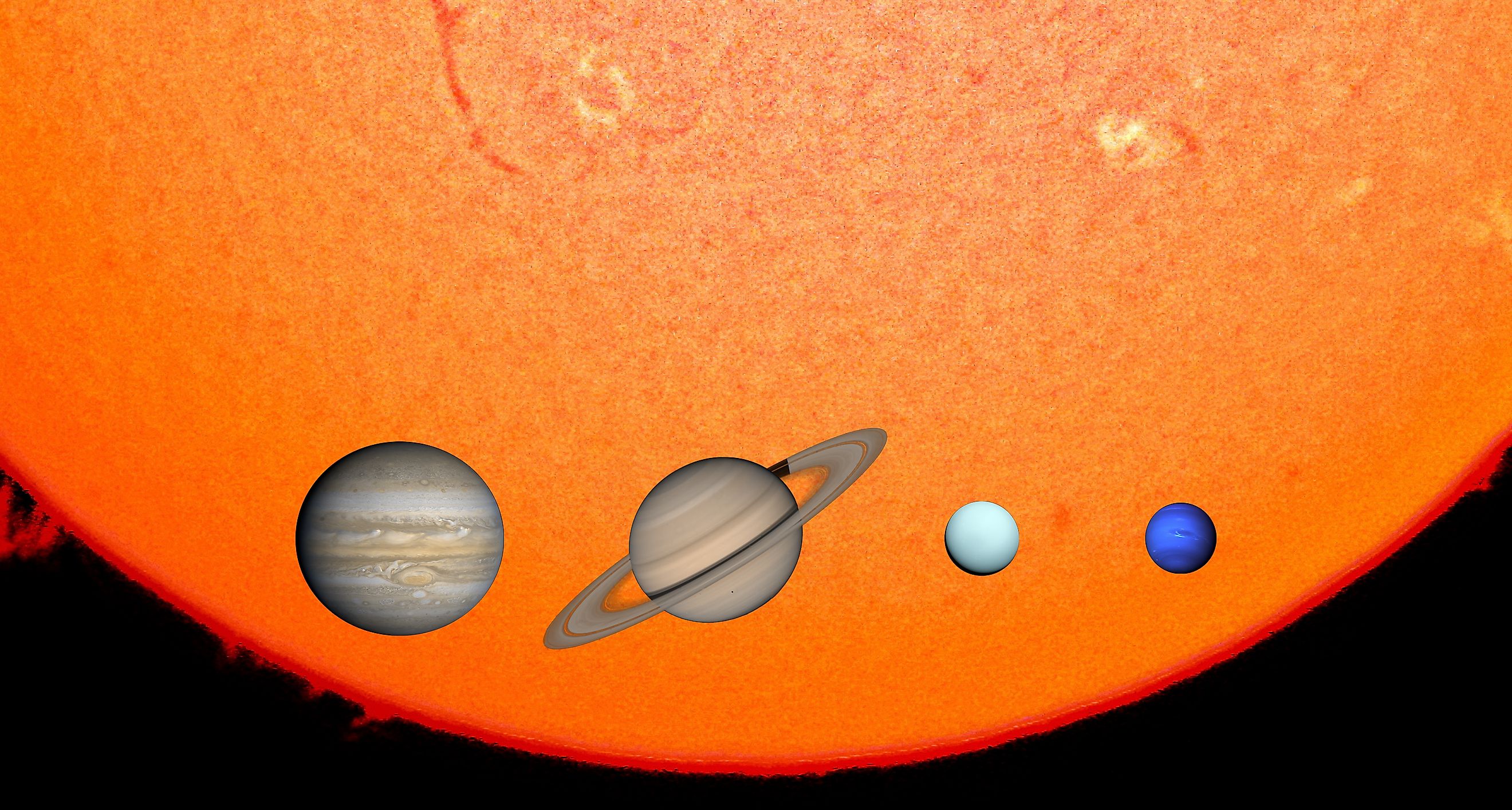
Which Planets Have Rings?
Of the eight planets in our solar system, Saturn appears to be the only one surrounded by a system of rings. Saturn’s ring system is what makes it such a popular and beautiful planet. Without rings, Saturn would look more like a watered-down version of Jupiter. Although it has the most spectacular ring system in the solar system, Saturn is not the only planet that has rings.
Interestingly, each of the four gas giants, Jupiter, Saturn, Uranus, and Neptune, has rings. Even Earth had a small ring system in the distant past, and Mars may be getting one in the far future! Which planets currently have rings? Which planets may have had them in the past? Will rings form around any of the planets in the future?
What Is A Ring System?
A ring system refers to a disk or circular region composed of solid materials, such as dust particles, small meteoroids, rocky fragments, miniature moons (moonlets), or other stellar debris, that orbits an astronomical body.
Ring systems are most widely recognized as planetary rings surrounding giant planets, such as Saturn's distinctive rings. These structures typically form part of the satellite systems associated with large planets, but rings can also exist around various other astronomical entities. For instance, rings can form around galaxies (galactic rings), stars (circumstellar disks), or smaller bodies like planetoids and minor planets. Examples include the asteroid belt and the Kuiper belt in our Solar System. Additionally, rings composed of interplanetary dust orbit the Sun, positioned at distances that align in resonance with planets like Mercury, Venus, and Earth.
Saturn
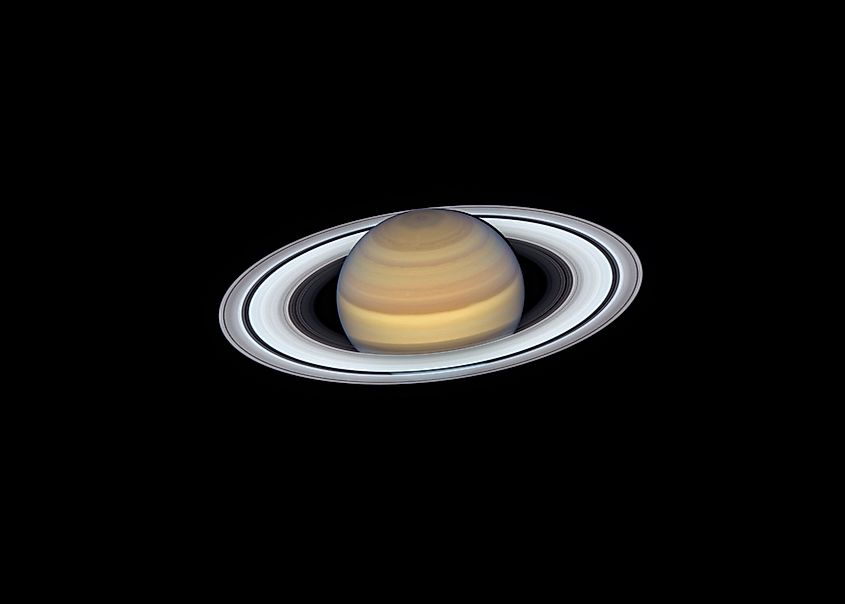
Any discussion on rings must begin with Saturn. After all, Saturn’s rings were the first to be discovered, and most of what is known about rings in the solar system comes from Saturn. Saturn’s rings are the most visible rings in the solar system and can even be seen with a small telescope or binoculars.
The Discovery Of Saturn's Rings
The rings were first observed in 1610 by Galileo Galilei, yet his telescope was not powerful enough to discern their full shape. Galileo believed that he had discovered two large moons on either side of Saturn. In 1655, the astronomer Christiaan Huygens became the first scientist to claim that Saturn was surrounded by a large disk. Knowledge of Saturn’s rings was lacking at the time as early astronomers had no way of determining their size, mass, and composition. Most astronomers assumed that Saturn’s ring was solid. In 1675, Giovanni Cassini discovered that the large ring around Saturn was actually made up of a multitude of smaller rings. Rather than being surrounded by a single ring, Saturn was surrounded by an entire system of rings with significant gaps dividing them. However, the belief that Saturn’s rings were solid was still widely believed, and it wasn’t until the 1800s that scientists began to understand the true structure of Saturn’s rings. In 1859, James Clerk Maxwell showed that a solid ring around Saturn simply could not exist. If the rings were solid, the gravitational pull of Saturn would warp their shape and eventually shatter them into pieces. Maxwell claimed that the rings were composed of countless particles, most of which would be no larger than a grain of sand.
Exploring Saturn's Rings
Most of what is known about Saturn’s rings comes from the four robotic missions that have successfully visited Saturn up close. In 1979, Pioneer 11 became the first mission to Saturn and offered scientists the very first up-close images of Saturn and its rings. Pioneer 11 confirmed Maxwell’s hypothesis that the rings were composed of countless tiny particles, the majority of which are made of water ice. In 1980, Voyager 1 completed its closest approach to Saturn. One year after Voyager 1, Voyager 2 completed its closest approach to Saturn. The Voyager spacecraft took the highest resolution images of Saturn and its rings at the time, offering scientists a never-before-seen view of Saturn and its rings. Although Pioneer 11 and the two Voyagers revealed a tremendous amount of information on Saturn’s rings, most of what is known comes from the Cassini mission. Unlike the missions before it, Cassini entered into orbit around Saturn and remained in orbit for over 13 years.
Over the last few decades, scientists have uncovered many rings around Saturn. Saturn is now known to have seven main rings, along with a number of smaller rings. The rings are lettered from A to G, their names being in order of their discovery. For example, rather than being in order from A to G, the rings are named in the following order: D, C, B, A, F, G, E. The D-ring was the first to be discovered, while the E-ring is the latest to be discovered. In terms of size, the rings are gigantic. The main rings cover 45,700 miles (73,000 kilometers) from Saturn. That is a fair distance, yet the rings are not overly thick. Although their thickness varies, they are generally between 32 feet (ten meters) and 0.6 miles (one kilometer) in thickness. Water ice makes up over 99% of the ring's composition, with most of the ice particles being only a couple of inches in size.
Jupiter
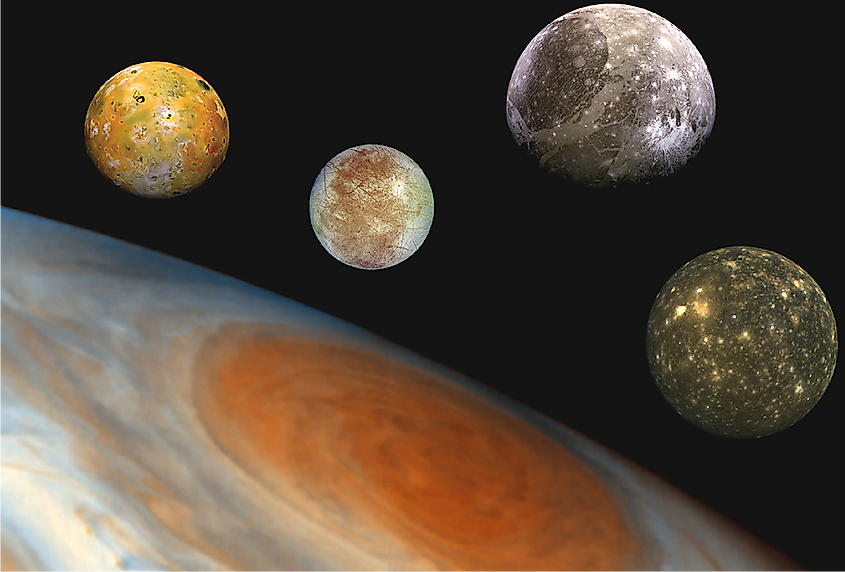
When looking at images of Jupiter, it is impossible to discern the existence of any rings. In fact, scientists had no idea that Jupiter even had rings until 1979 during Voyager 1’s flyby of Jupiter. Jupiter’s rings are so faint that only the largest telescopes on Earth can see them. Most observations of Jupiter’s rings are made using the Hubble Space Telescope. Jupiter’s ring system is composed of four rings: the Main ring, the Halo ring, the Gossamer ring, and the Himalia ring. Despite their faintness, Jupiter’s rings cover a distance of 226,000 kilometers from Jupiter. In terms of thickness, each of the rings varies by a noticeable amount. The halo ring has a thickness of 7,767-miles (12,500-kilometres), while the main ring has a thickness of only 18.6-miles (30-kilometres). Like Saturn’s rings, Jupiter’s rings are composed of countless particles only a few inches across, the majority of which are composed of water ice. However, Jupiter’s rings actually have a much higher amount of dust particles than Saturn’s rings.
Uranus And Neptune

Like Jupiter and Saturn, Uranus and Neptune also have their own ring systems. Uranus is surrounded by 13 known rings, while Neptune is surrounded by five rings. Using Earth-based observatories, the rings of Uranus were discovered in 1977 and were seen up close by Voyager 2 during its flyby of Uranus in 1986. Unlike the ring systems of Jupiter and Saturn, the rings of Uranus are noticeably dark. The exact composition of Uranus’ rings is still a mystery. Given how dark they are, it is unlikely they are composed of water ice like the rings of Saturn. Rather, it is possible that they are made of carbon-based molecules. The rings of Neptune are similar to those of Uranus in that they are exceptionally dark and contain very little amounts of water ice. The rings of Neptune were discovered in 1984 by Earth-based observatories and studied more in-depth during Voyager 2’s flyby of Neptune in 1989.
Past And Future Rings
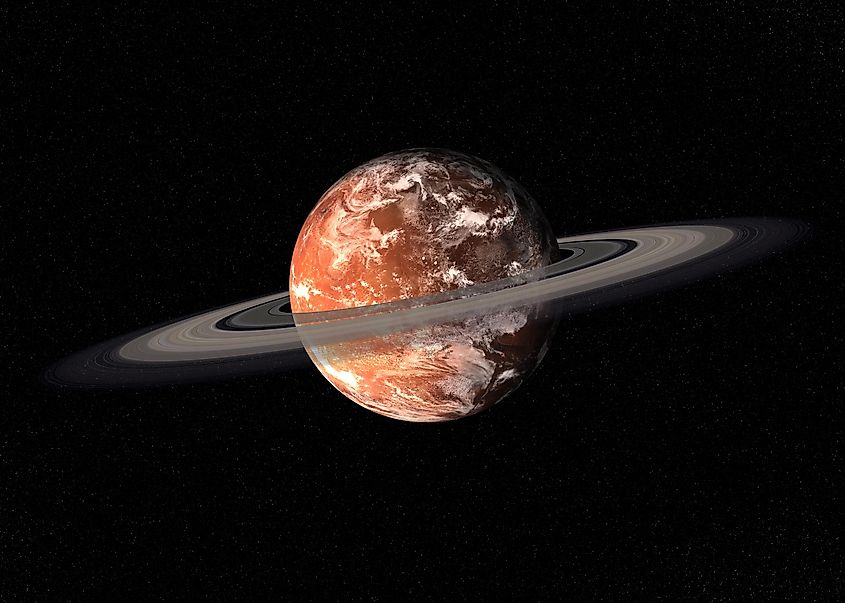
If you were standing on the Earth 4.5 billion years ago, you would likely see a ring surrounding the newly formed planet. Although it would not have been nearly as large or magnificent as Saturn’s, the Earth did have a ring system for a brief period. 4.5 billion years ago, the Earth underwent a collision with a Mars-sized planet called Theia. The collision nearly destroyed the young Earth, yet thankfully, it occurred at just the right angle, only to shatter some of the Earth. A tremendous amount of debris was ejected into Earth’s orbit and formed a large ring worldwide. The ring itself did not exist for long, and eventually, all the material coalesced to form the moon. Given that planetary collisions were common in the early solar system, it’s possible that all of the inner rocky worlds had rings at some point. Interestingly, Mars may form a ring system in the far future. One of the Martian moons, Phobos, is gradually falling towards Mars. The orbit of Phobos is slowly decaying, and as a result, it is inching towards the Red Planet. In about 70 million years, Phobos will be so close to Mars that the planet’s gravity will rip Phobos apart. The debris from Phobos will enter into orbit around Mars and form a system of rings.











